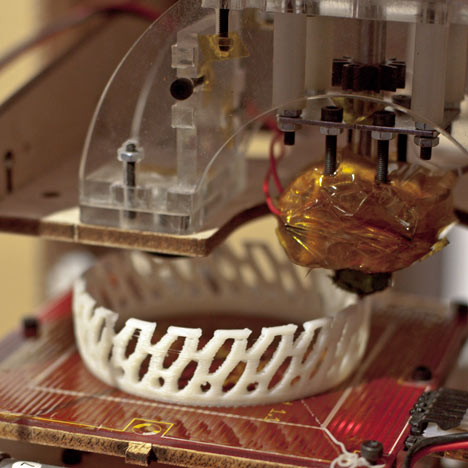
Technology and Design: the digital industrial revolution
Digital manufacturing and open-source design are revolutionising the way designers make their products, reports Dezeen editor-in-chief Marcus Fairs in this latest article from our series on technology and design supported by computing brand Intel.
Designers weren’t the stars of the Milan furniture fair this year, and nor was the furniture.
Instead, machines stole all the headlines. At exhibitions across the city, robots were fabricating chairs, computerised metal presses were stamping out lamps and rapid prototyping machines were spitting out everything from coffee machines to food.
Milan’s annual April design fair is the biggest and most important event of its kind in the world and it’s where journalists and cool-hunters converge to spot the latest trends. This year they were unanimous: technology is revolutionising the way designs are turned into finished products, heralding a new era of digitally driven production.
“The idea is to show a new industrial digital revolution, which is happening around us,” said designer Tom Dixon, who presented a series of technology-driven installations at Milan’s Museum of Science and Technology.
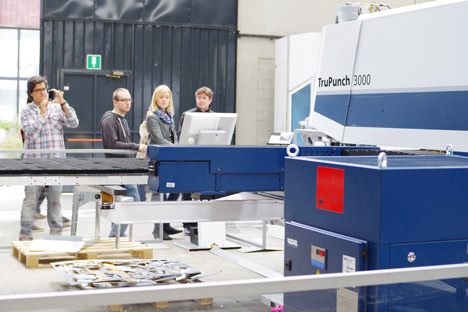
The most impressive of these featured three large machines provided by German manufacturer Trumpf (above) which punched, folded and laser-engraved sheet metal, churning out products such as dining chairs, lamp shades and even rulers in front of fair-goers. The machines worked at such high speed that their moving parts were a blur yet they made relatively little noise or mess; it was a world away from the deafening, smoke-spewing factories of old.
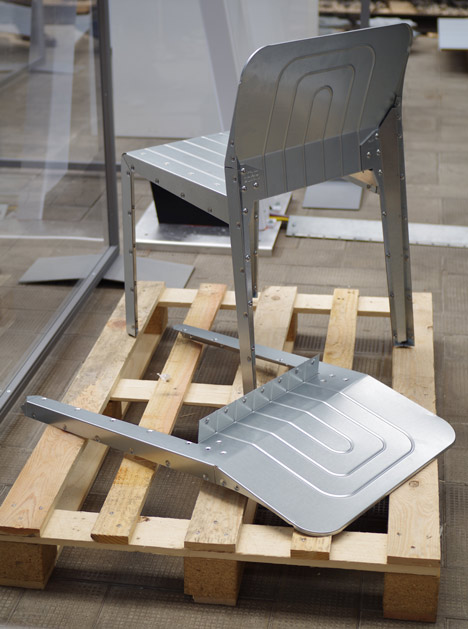
“Suddenly designers have got access to machinery they never could have had when I started out,” Dixon added. “The programs you use to design things and the programmes these machines use to stamp and fold things are very similar now. Previously the tooling would have cost £100,000 or £200,000; now it costs £500, £1000. And they’re quite generic so they can do different things.” He gestures to the 67-tonne punch press, the biggest of the three Trumpf machines. “So on this machine I’m not only making a lamp, I’m also making a chair. If I want to change or adapt the chair I just re-programme the machine.”
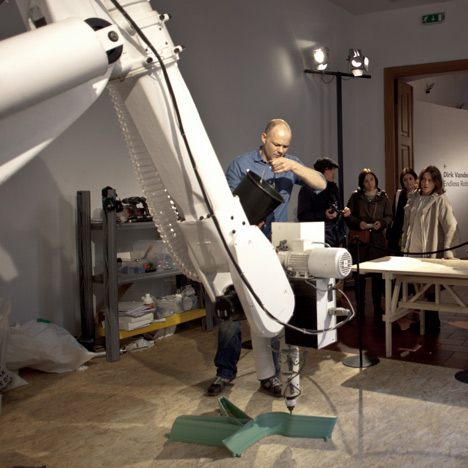
Across town, a show called The Future in the Making presented a range of different technologies that are being harnessed by designers to create products. “We have Dirk Vander Kooij’s industrial robot that’s actually printing out chairs on the spot (above)” said Joseph Grima, editor-in-chief of Domus magazine and the curator of the show. Van der Kooy’s robot methodically laid down thin ribbons of molten plastic which gradually built up into pieces of furniture.
“Markus Keyser’s Solar Sinter machine is also there,” Grima noted, describing a solar-powered rapid prototyping machine (below) that converts sand into three-dimensional objects, meaning that it could manufacture items in the middle of a desert without needing any additional raw materials.
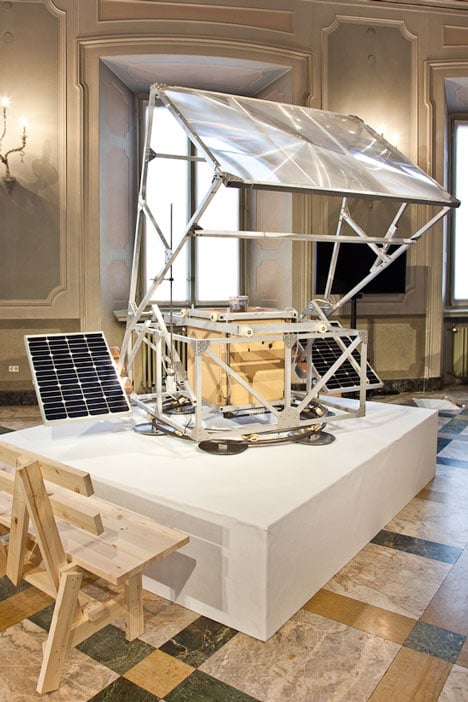
The implications of these technologies are profound, Grima believes, as their adaptability and affordability mean that items can be manufactured anywhere, in relatively small quantities, with each item being customised for the consumer. This could potentially over-turn the current industrial model that requires huge investment and manpower and which has led to the migration of industrial production to faraway places such as China and Vietnam.
“I think it’s an incredible opportunity for the design community,” Grima said. "One of the objectives of our exhibition is to invite not only designers, but also companies, to think about completely new business models. To actually think about a future [where it’s possible to do] manufacturing on the spot [rather than] simply removing production to another part of the world, and kind of expecting end-users to be happy to just like unbox their objects and put them in their sitting rooms.”
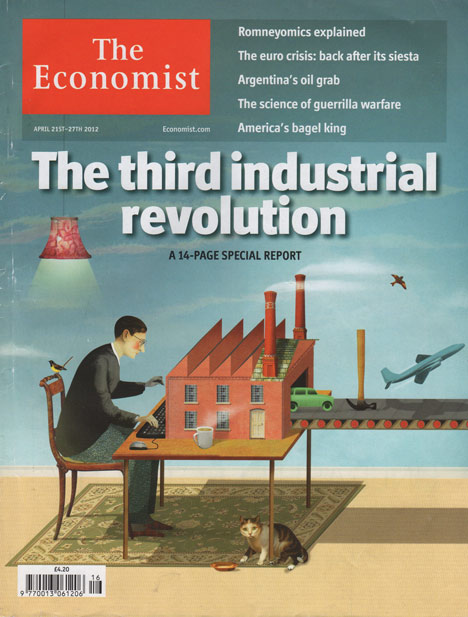
To reinforce the point, The Economist magazine ran a special feature on digital manufacturing the week after the Milan fair, stating that digital manufacturing technologies heralded a “third industrial revolution”. The first industrial revolution saw the mechanisation of home-based craft industries such as textile weaving in 18th century Britain while the second, started by Henry Ford in the USA at the start of the 20th century, introduced the production line and heralded the era of the mass production of finished goods.
“Now a third revolution is under way,” The Economist stated. “Manufacturing is going digital. The digitisation of manufacturing will transform the way goods are made.” This will bring us full circle and herald a return to locally based batch production rather than mass manufacturing that takes place in a remote location. “The factory of the future will focus on mass customisation — and may look more like those weavers’ cottages than Ford’s assembly line,” said The Economist.
This third revolution harnesses advanced production techniques such as robotics and 3D printing and exploits the disruptive power of the internet to allow anyone with a computer to access technologies that until recently were in the hands of a just a few large corporations.
“It can lead to a lot,” said Paola Antonelli, senior design curator at the Museum of Modern Art in New York. “First of all, there’s an underpinning of sustainability. The idea that you can make things yourself, that you can bring the production manufacturing tools closer to the final user, makes it so that you can produce what you need, at the time that you need it. Secondly, it’s a boost to creativity. Today you can design a plastic chair which, once upon a time, 30 years ago, required an investment of, like, $50,000 dollars for the moulds because injection moulding was very expensive.”
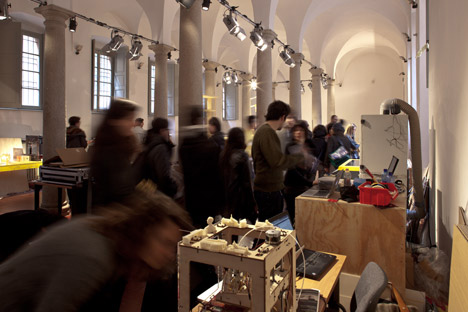
Instead of having to licence their products to manufacturers, designers can now book time at a local FabLab (above) or upload design files to online services such as Shapeways, Fluid Forms and Ponoko, all of which offer 3D printing on demand. Alternatively they can invest in their own mini-factories by “hacking” machines like 3D printers or laser cutters using open source hardware from companies like Arduino and MakerBot (below).
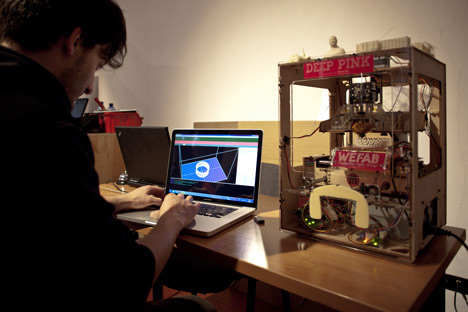
“3D printing existed even 20, 30 years ago, but it was either done with lesser materials or it was extremely expensive,” says Antonelli. “What I like about smaller machines like MakerBot is that they’re much less expensive. It really is about letting everybody experiment more, and hopefully be more economical and more sensible with making things.”
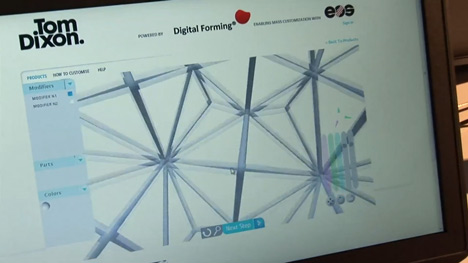
Back at Milan’s Museum of Science and Technology, Tom Dixon showed us another installation that gives a glimpse of how design, manufacturing and consumption may merge in the near future. Dixon had set up a “co-create” lab with Digital Forming, a company that helps brands offer customers bespoke, individually customised products.
At a row of laptop computers, visitors were manipulating computer models of products that Dixon had designed to create a customised version that they could pay for and get printed and shipped to their home address.
“I’ve designed the departure point, but the customer adapts it to his own configuration,” said Dixon. “You can adapt the size, the density and the geometry. It’s automatically priced and you can order your object before you get home from Milan and you have your own Tom Dixon lamp or speaker.”

|
What does the digital industrial revolution mean for you? Let us know your thoughts in the comments section below, on Facebook or by tweeting with #IntelAlwaysOn. |
Tom Dixon, Joseph Grima, Paola Antonelli and others talk to Marcus Fairs about the digital manufacturing revolution in our series of movies filmed at Dezeen Studio in Milan. Watch the interviews »
The first article in this series took us inside university workshops and studios to investigate how digital technology is radically transforming design education and ask whether emerging technology a help or hindrance to design education. Read it here and have your say »
We then turned our attention to how our online lives and physical environments will become increasingly entwined as information technology creeps into everyday objects like cars, fridges and even park benches. Read it here and have your say »
